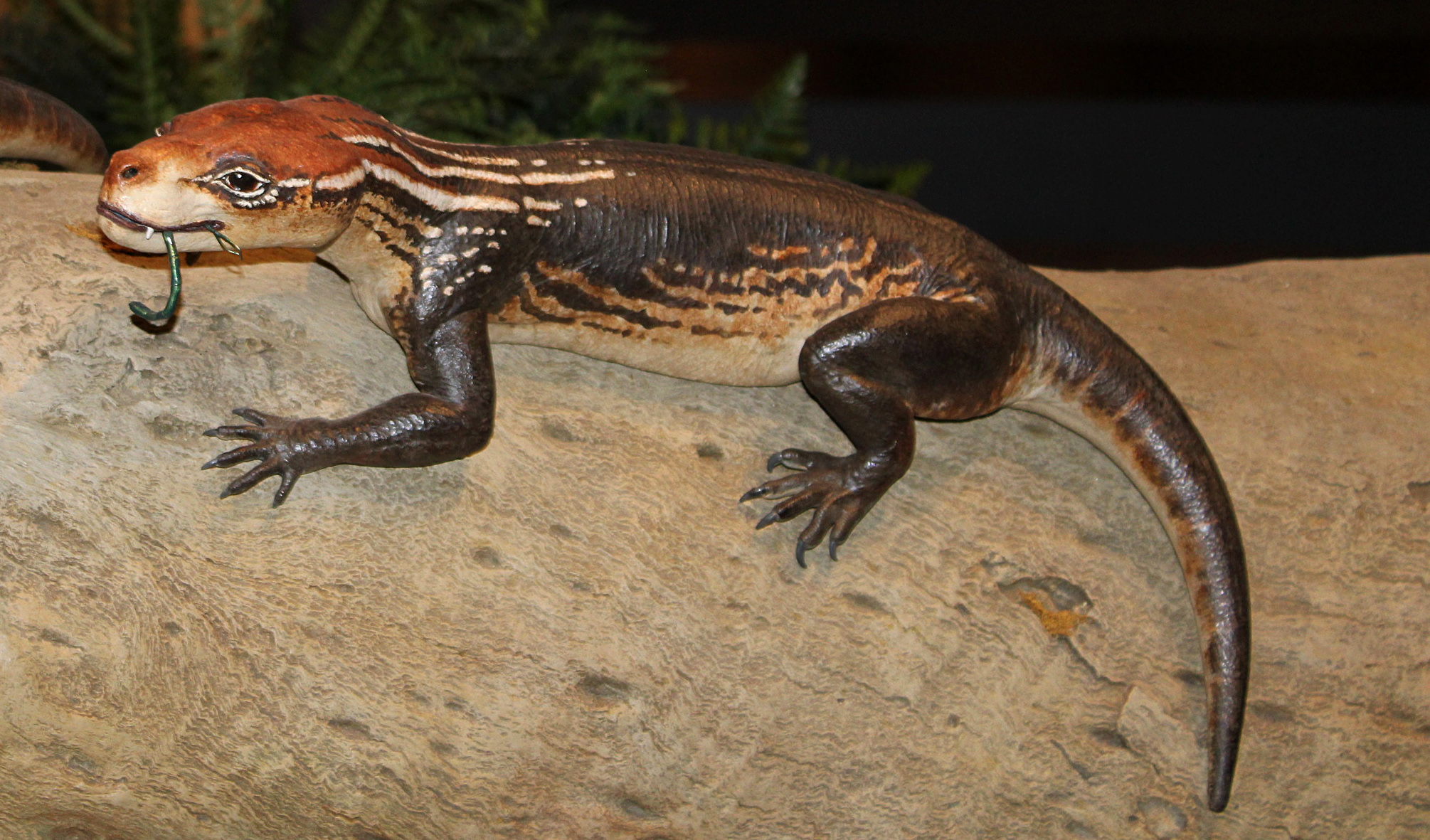When paleoscience guru Bruce Rubidge first spread the word in the Eastern Cape town of Graaff-Reinet that he was looking for a youngster who was “practical, could think out of the box and change a tyre”, friends of Justin Arnols’ parents suggested that he should go and see the distinguished professor.
Soon, Rubidge realised that the quiet but friendly young man had an eye for fossils and took him under his wing. Today, Arnols works at the soon-to-be-opened Karoo Origins Fossil Centre in Graaff-Reinet’s iconic Church Street.
“It is a once in a lifetime opportunity — for me this is a real dream come true,” Arnols said.
His job as a fossil preparer involves painstakingly separating bone from stone to find ancient creatures that tell the story of a past stretching back millions of years. It can sometimes take Arnols months to finish preparing just one fossil.
 Justin Arnols at work in his laboratory at the Karoo Origins Fossil Centre. (Photo: Estelle Ellis)
Justin Arnols at work in his laboratory at the Karoo Origins Fossil Centre. (Photo: Estelle Ellis)
 Professor Bruce Rubidge. (Photo: Estelle Ellis)
Professor Bruce Rubidge. (Photo: Estelle Ellis)
Rubidge, who is busy finalising an exhibit at the centre before planning its opening for sometime in April, says Arnols is a crucial member of the team.
He is full of praise for the young man’s willingness to learn, his work ethic, his natural talent and his patience to complete delicate work.
The fossil centre is a long-term dream come true for Rubidge. It will house the world-class collection of his grandfather, Sidney Rubidge, which used to be on display at Wellwood Farm near Nieu-Bethesda.
Rubidge is a distinguished paleontology professor at the University of the Witwatersrand. Although he now gives most of his time to establishing the Karoo Origins Fossil Centre, he has maintained his links to Wits, which will be allied to the centre.
Prolific fossil collectors, the Rubidge family has several creatures named after it. The most famous, the Rubidgea atrox, was a tiger-sized predator.
The skull has pride of place in the fossil centre, which also has a room showing a film of what a prehistoric waterhole in the Karoo would have looked like and which animals would have been around. Visitors will also be able to see reconstructions of the Rubidgea atrox and some of the earliest mammalian creatures.
 Justin Arnols touches the skull of a new species of dicynodont. It took him eight months to prepare. (Photo: Estelle Ellis)
Justin Arnols touches the skull of a new species of dicynodont. It took him eight months to prepare. (Photo: Estelle Ellis)
In the air-conditioned laboratory, away from the sweltering Karoo heat, Arnols painstakingly works away at a fossil. He matriculated at Graaff-Reinet’s Spandau Secondary School, where he said he learned a little about fossils, but not enough.
“In my wildest dreams, I would never have thought that I would end up here,” he said. He had planned to become an engineer – but then he met Rubidge.
Arnols grew up on Mount Camdeboo Private Game Reserve. One day, word reached the game farm that Rubidge was looking for someone full of energy who could work with his hands.
“Bruce spread the word and one of his friends who goes to church with him, Richard Viljoen, told my parents. I was still waiting for my matric results and I didn’t have a lot to do,” Arnols said. “Bruce then said, ‘Just come for an interview.’ I did not even know what a fossil looked like. But when Bruce showed me the fossils, I knew.
“My dad said it won’t do damage to just try something new, but I just knew. Even now when I talk about fossils my friends tell me: ‘Your whole face lights up.’ ”
As part of Arnols’s training, Rubidge gave him many books to read as well as assignments to do.
“I had to understand how the animals were and how they lived so I can know what it is that I see in the rocks.”
He accompanied Rubidge on a field trip to Abrahamskraal near Beaufort West in March 2022. It was there that he found his first few pieces of bone.
“But from there I just got better and better at it. Your eyes learn to see,” Arnols said. “When I found my first skull, I was so happy. I told myself, wow. Wow. My boss always says if something isn’t difficult or exciting, it isn’t worth it.”
The fossils that are the most difficult to work on, he says, are those collected in the Lower Beaufort Group, which forms part of their work in the Karoo.
“These fossils are notorious for poor separation between the rock and the bone,” Arnols said. But his biggest challenge and his most exciting discovery so far is a new species of dicynodont — a herbivorous animal with two tusks — whose skull took him eight months to prepare.
“We realised that we found a species never seen before,” he said. “Now Professor Bruce and his colleagues from the United States of America will write a paper on this.
“Yooo, it was a difficult one. It was the first one that I had to use acid separation to remove the lower jaw because it was lying in the wrong direction.
“I had the patience to do it, but I never thought it would be a new species. I am so excited about this,” he said.
Arnols’ laboratory has glass windows and visitors will be able to see him at work once the centre opens. DM
This story first appeared in our weekly Daily Maverick 168 newspaper, which is available countrywide for R35.





 Justin Arnols touches the skull of a new species ofdicynodont. It took him eight months to prepare. Photo: Estelle Ellis
Justin Arnols touches the skull of a new species ofdicynodont. It took him eight months to prepare. Photo: Estelle Ellis 